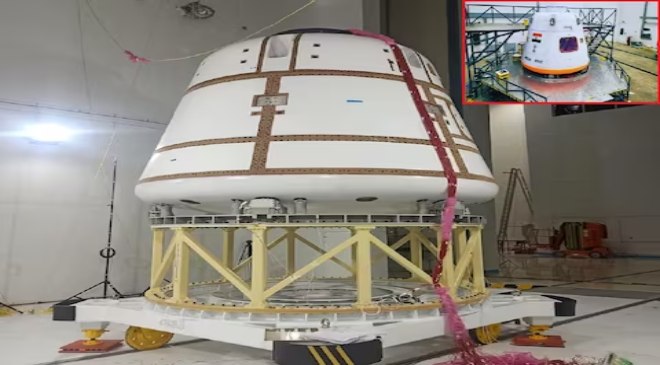The Indian Space Research Organisation (Isro) is planning the first test vehicle abort mission or TV-D1 as part of Gaganyaaan between 7am and 9am on Saturday (Oct 21). TOI looks at what the space agency will basically do.
The crew module
For this mission however, Isro will use an unpressurised crew module (CM) which has completed its integration and testing.
Read More: Recruitment Scam: TCS Fires 16 Employees, Bars 6 Vendors
This unpressurised CM will have an overall size and mass of actual Gaganyaan CM and will house all the systems for the deceleration and recovery, including parachutes, recovery aids, actuation systems and pyros. The avionics systems are in a dual redundant mode configuration for navigation, sequencing, telemetry, instrumentation and power, Isro said.
The CM for TV-D1 has been designed to capture the flight data for evaluation of the performance of various systems. It will be recovered after touchdown in the Bay of Bengal, using a dedicated vessel and diving team from the Indian Navy.
The mission
“The TV-D1 is in the final stages of preparation. The vehicle is a single-stage liquid rocket developed for this abort mission. The payloads are the CM and the crew escape systems (CES) with their fast-acting solid motors, along with CM fairing (CMF) and interface adapters,” Isro said.
Read More: Govt amends aircraft rules; commercial pilot licenses to be valid for 10 years
The mission will simulate the abort condition during the ascent trajectory corresponding to a Mach number of 1.2 (1,482 kmph) expected to be encountered in the Gaganyaan mission. The CES with CM will be separated from the Test Vehicle at an altitude of about 17km.
“Subsequently, the abort sequence will be executed autonomously commencing with the separation of CES and deployment of the series of parachutes, finally culminating in the safe touchdown of CM in the sea, about 10km from the coast of Sriharikota,” Isro said.
The CM after integration underwent various electrical testing, at Isro’s facility in Bengaluru, including an acoustic test and was dispatched to the spaceport in Sriharikota on August 13.
Read More: For school students, government plans to roll out ‘One Nation, One ID’
At the spaceport, it will undergo vibration tests and pre-integration with the CES, before final integration to the Test Vehicle at the launch pad.
“This test vehicle mission with this CM is a significant milestone for the overall Gaganyaan programme as a near-complete system is integrated for a flight test. The success of this test flight will set the stage for the remaining qualification tests and unmanned missions, leading to the first Gaganyaan mission with Indian astronauts,” Isro added.





































